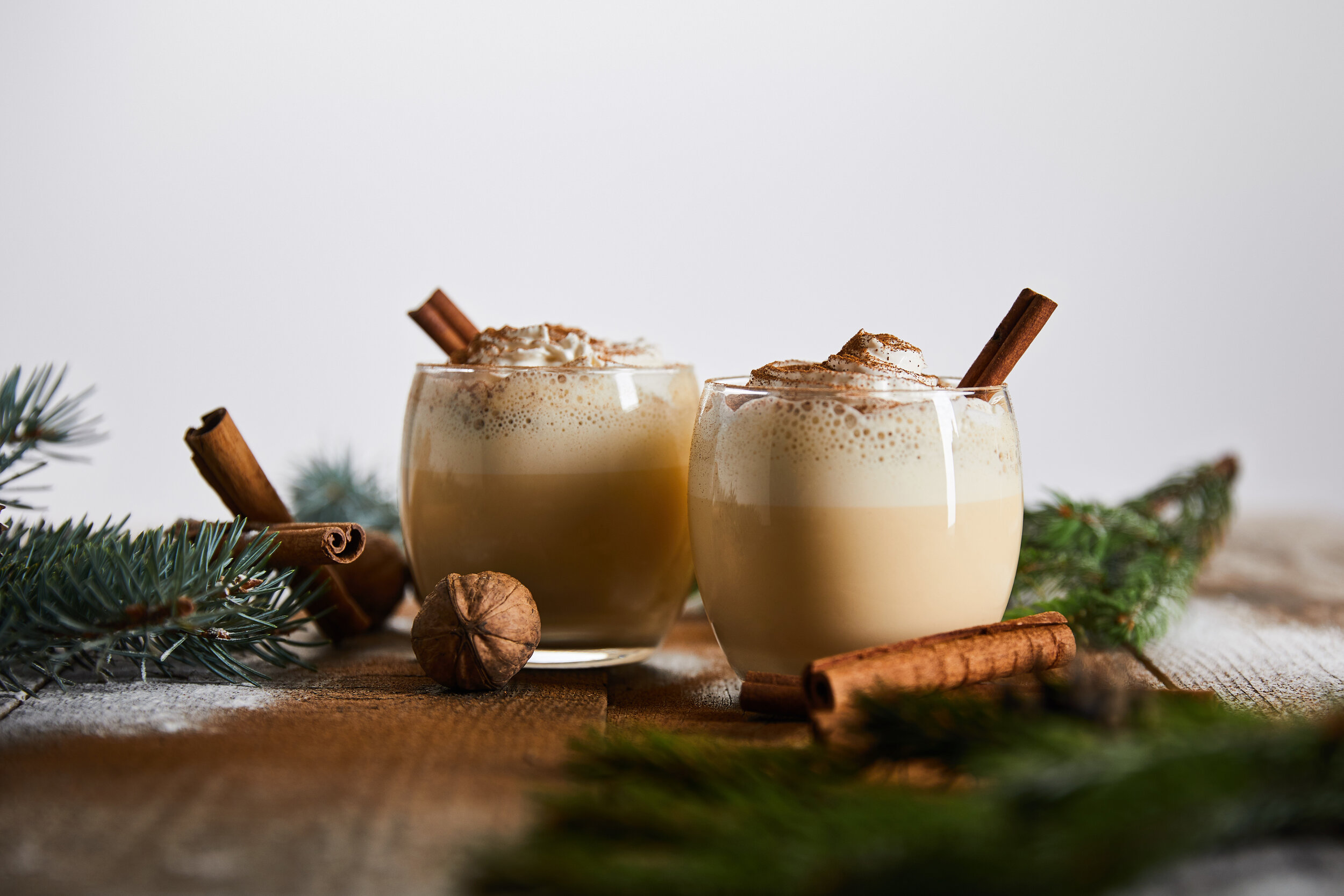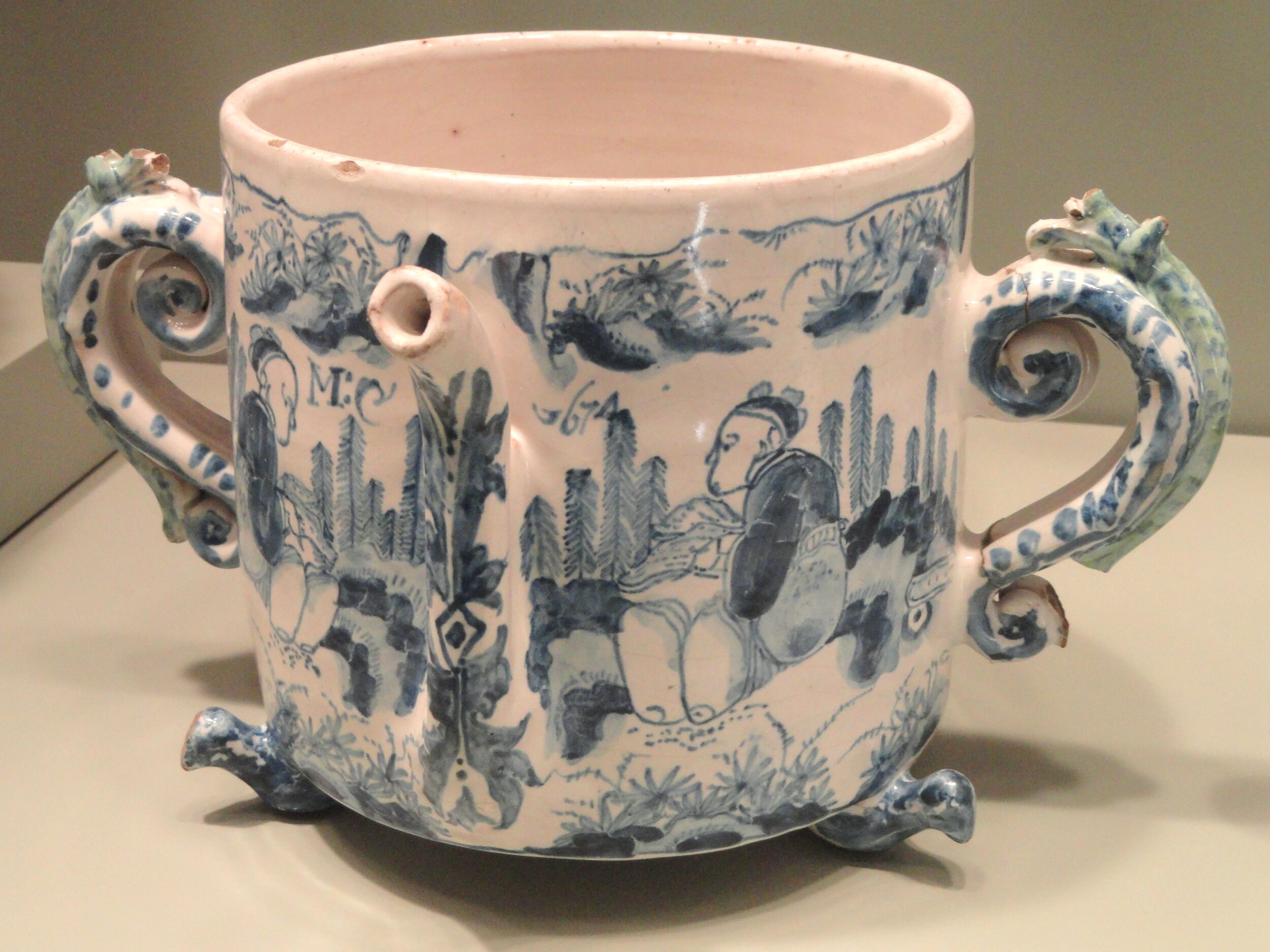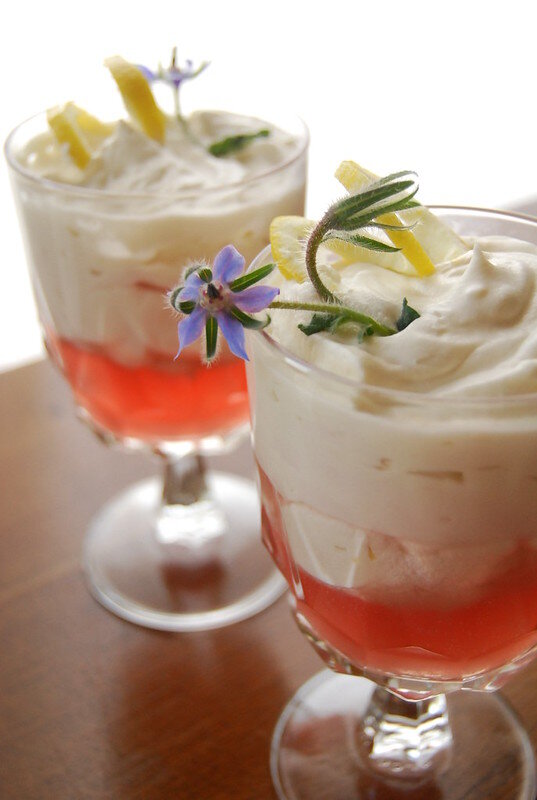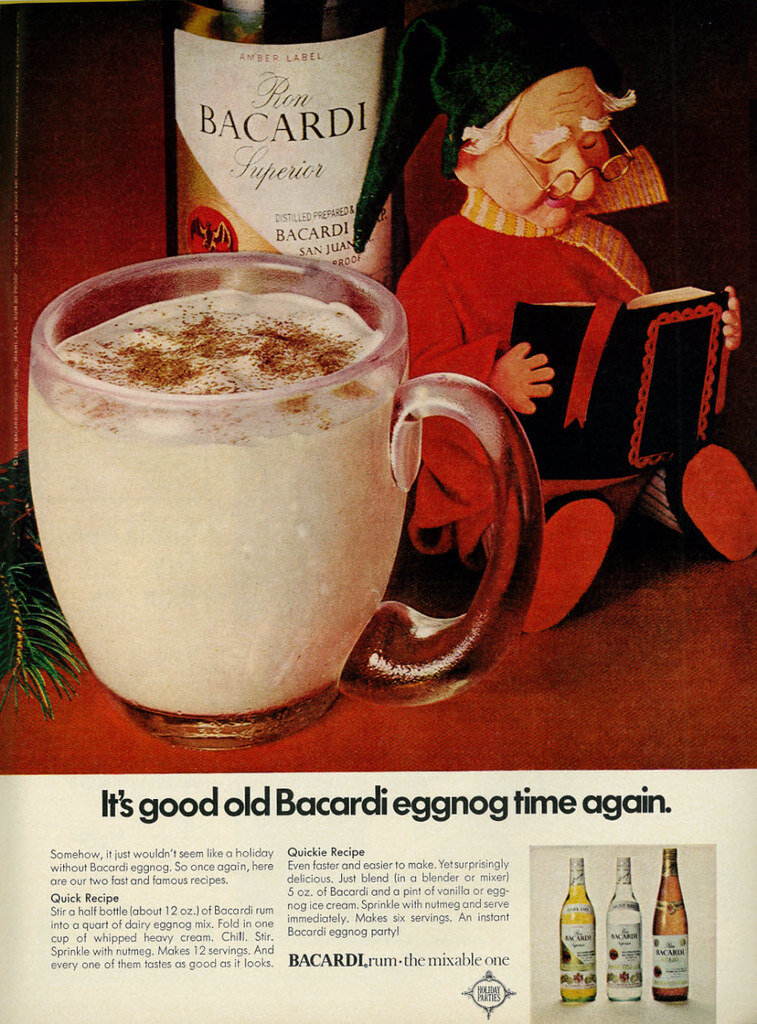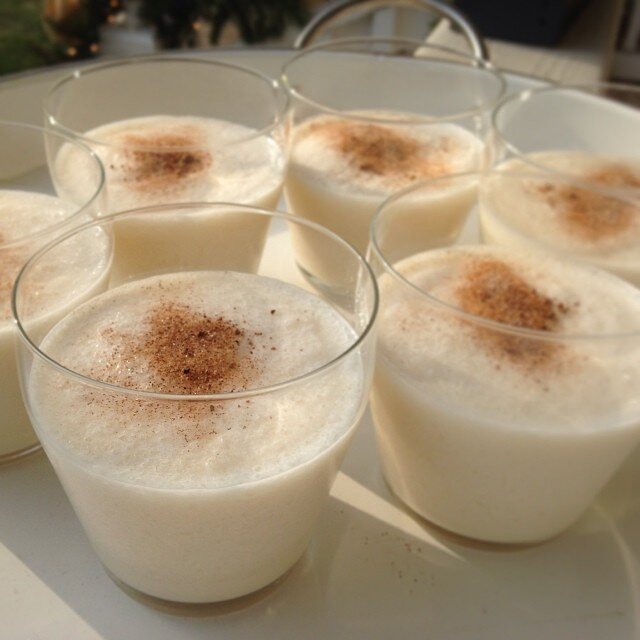Classic Cocktails in History: Eggnog
How posset and syllabub became the boozy, sweet, winter nog
While wassail may get some attention in popular songs, the real star of Christmas, and of winter in general, is eggnog. This holiday staple has been around for centuries, evolving from a medical prescription to a frothy dessert to a Christmas treat. The recipe itself calls for simple ingredients that most people have around the house: eggs, milk, sugar, spices, and liquor. But in the thirteenth century, these were harder to find.
Posset
The ancestor of eggnog was a combination of drink and dessert called a posset. During the Middle Ages, a posset was used as medicine by the poor and middle classes. Access to milk was easily accessible only to the rich, and the poor used it only when needed. They would mix hot milk with inexpensive wine or ale, and then serve it to those who were under the weather. The alcohol would cause the milk to curdle, creating a solid layer on top and the liquid to sink to the bottom. As unappetizing as it sounds, it was meant to be consumed quickly. And by poor people.
The wealthy of that age did not enjoy a posset in the same way, since they had better access to the ingredients. They also had access to other commodities that were in short supply: sugar and spices. A similar mixture of milk and alcohol would be created, but they would sweeten it with sugar and mix in spices from exotic lands. It would be served as a dessert, eating the sweet, spiced top with a spoon while using a straw for drinking the liquor at the bottom. Posset served in this way became so popular that a pot was made specifically for the treat, looking very similar to a teapot. They were so popular that William Shakespeare mentioned them in several plays, as a medicine (Hamlet, Act 1 Scene 5), as a treat (The Merry Wives of Windsor, Act 5 Scene 5), and as a delivery method for poison (Macbeth, Act 2 Scene 2). It is a very versatile delicacy.
17th century posset pot, via Wikipedia Commons
Syllabub
But where are the eggs? While some monks used them to thicken the posset, they were not popular additions to the recipe until the 17th and 18th centuries. Eggs become a more common addition as a thicker version of the drink was served in Europe, and it was becoming more of a custardy dessert among the upper classes than a medical necessity. Possets were typically served room temperature to warm. Over time, they were allowed to cool more before serving, sometimes overnight. The posset stepped closer to eggnog and evolved into what is known as a syllabub during this time. Syllabubs were close to possets, with the differences of being served cooler and having less alcohol in them. They were thicker and creamier, much closer to the modern eggnog. At least in one method of serving. There was one method, known as "hatted kit," where the preparation was to "milk as much milk from the cow as will make a strong froth and the ale look clear." This advice came from a 1769 book, The Experienced English Housekeeper, by Elizabeth Raffald. Yes, they would milk the cow right into the alcohol and serve it. The idea was to make the mixture frothy and light, and this was one method of doing it.
fancy syllabub, via LearningLark, Flickr
Egg ‘n’ Grog
It was during this time, the 17th and 18th centuries, that the popularity of the posset and syllabub waned in popularity Europe, but was huge in the colonies. The number of farms in America, as well as easier access to spice and sugar, made creating these delicacies much easier. They went from a dessert expensive and enjoyed only by the wealthy, to a drink that became common to all. But one tradition started by the wealthy continued. To keep the milk and eggs they had from spoiling, and to have something warm to enjoy during the colder months. This began their association with the holidays, a tradition that was carried through to the colonies. It was so popular that George Washington had developed his own recipe for Mount Vernon:
"One-quart cream, one-quart milk, one dozen tablespoons sugar, one pint brandy, 1/2 pint rye whiskey, 1/2 pint Jamaica rum, 1/4 pint sherry—mix liquor first, then separate yolks and whites of twelve eggs, add sugar to beaten yolks, mix well. Add milk and cream, slowly beating. Beat whites of eggs until stiff and fold slowly into mixture. Let set in cool place for several days. Taste frequently." - George Washington's recipe, estimated from the 1780s
Even the liquor in this cocktail was changing. The expensive wines and brandies used in Europe were replaced with more common whiskey or rum in North America. Here, the Americans called the drinkable dessert by the slang term "egg 'n' grog." It was served in a wooden cup, also known as a "noggin." Thus, in the mid 18th century, the term "eggnog" entered the lexicon. It became so popular that after the American Revolution, there was a riot for the drink at West Point. The students there defied the orders of the superintendent at the storied academy, Colonel Sylvanus Thayler, and got drunk off of eggnog during Christmas. Twenty students were court marshaled after the event.
The 19th century was not nearly as eventful for eggnog. It spent the better part of the century evolving into the holiday staple we all know and love. The standard way to serve it became cold, with the warm version being a variation that was more popular in the west. In the well-known The Bon Vivant's Companion, Jerry Thomas lists six different recipes for the "indispensable" Christmas cocktail, including the famous Baltimore Egg Nog:
"Take the yellow of sixteen eggs and twelve tablespoons of pulverized loaf sugar, and beat them to the consistence of cream; to this add two-thirds of a nutmeg grated, and beat well together; then mix in a half a pint of good brandy or Jamaica rum, and two wine-glasses of Madeira wine. Have ready the whites of the eggs, beaten to a stiff froth, and beat them into the above-described mixture. When this is all done, stir in six pints of good rich milk. There is no heat used." - Jerry Thomas, The Bon Vivant's Companion, 1862
Eggnog during Prohibition
As time passed and Americans grew more and more fond of their drink, the Temperance movement started to push back on having bowls of boozy eggnog out for people to enjoy during the holidays. Newspapers extolled the values of staying sober through the holidays, noting that "much of the drunkenness which too frequently disgraces Christmas Day is due to the free liquor and egg-nog of the barrooms, in which young and old can fill themselves full enough during the early hours of the morning to keep drunk all day." (Baltimore Sun, December 18, 1872) Eggnog never lost its alcoholic bite during this time, but no shortage of voices warned good-souled Americans about the evils of this “vile” drink.
Presidents, however, clearly loved this drink. When America came back to peace, and drinking, after World War II, eggnog was there waiting for them. There was no way that Prohibition, a depression, or wars were going to keep people away from Christmas traditions. On December 23, 2015, the U.S. National Archives tweeted out the recipe President Dwight Eisenhower preferred to use for holiday entertaining:
1970s Bacardi ad
Eisenhower's Eggnog Recipe
1 dozen egg yolks
1 pound (450 g.) granulated sugar
1 quart bourbon (950 mL.) (part of which can be rum or brandy)
1 quart (950 mL.) coffee cream
1 quart (950 mL.) whipping cream
"Put the dozen egg yolks in an electric mixer. Feed in the granulated sugar [1 lb/450 g.] very slowly as to get a completely smooth, clear light mixture. When this is perfectly smooth, begin to add the bourbon very slowly. (The process up to here would normally consume at least 30 minutes—with a good mixer.) Add one quart (950 mL.) of coffee cream.
Put the whole thing in the ice box until a half hour before serving at which time the whipping cream [one quart/950 mL.] should be beaten until only moderately thick. Be careful not to get it too thick. Mix it slowly into the mixture and serve with nutmeg."
The Atlantic decided to make this recipe a few years ago and found it to be light in body with a boozy kick. In the heyday of this cocktail, that description came up frequently. Especially as the creation of the cocktail was aided with electric kitchen tools and other modern technology. While technology was suitable for the home cook and their production of a light, frothy holiday cocktail, it led to the creation that would bring the holiday treat out of fashion: pre-made, store-bought eggnog.
Eggnog in the carton
When you bring up eggnog to the average Christmas enthusiast, it can cause a dark cloud to pass over their faces. Commercially made eggnog, around in a variety of forms since the 1920s, has never held a candle to a well-made batch of handcrafted nog. Stores initially sold it as a powder that could be stored for long periods, and mixed into milk at the appropriate time of year. This was well before refrigeration was a standard technology in the home, and it would be inconvenient to store cartons of eggnog. It was the post-war 1950s that saw refrigerators in every home and with it cartons of eggnog. They were typically overly sweet, thick, and lacked the spices and alcoholic balance of the real thing. As the years passed and hand made cocktails fell further and further out of fashion, eggnog's reputation went down with it. By the 1980s and 1990s, eggnog was as welcome as fruitcake at the average holiday party.
Aaron Goldfarb blends a 6 week old nog with a fresh one
Modern eggnog
Fortunately, there have been a few hearty souls that have been bringing eggnog back to the holiday cocktail scene. People like Aaron Goldfarb, author of Gather Around Cocktails, who has been part of a small but mighty group bringing this cocktail back into vogue. He has been keeping a batch of aged eggnog in his fridge for the last five years, taking it out to show off, and periodically taste, during the holidays. Speaking with him briefly, he sees eggnog as a cocktail that is a certified classic, with a smaller, more dedicated group of followers. "It is not in every craft cocktail bar, but there is an enthusiastic following," Aaron mentioned during our conversation. The places he suggests checking out are The Modern in New York City, where they age it in barrels and serve it with flair, Harvest in Boston where they also barrel age their nog, and Clyde Common or Pepe Le Moko in Portland to sample the tequila-based eggnog that Jeffrey Morgenthaler has created. (Editor’s note: I also highly recommend the Tom & Jerry, a warm eggnog-like delight served at Pegu Club in NYC only on the coldest of evenings.)
Fear not the raw egg!
Aaron Goldfarb is a proponent of aging your eggnog, and the science backs his assertions. He gives credit to bartender Nick Bennett for bringing the technique back into fashion. "The pinnacle of aging eggnog is two weeks," Aaron states. "The mixture itself comes together well and becomes incredibly silky, with the best notes of the liquor used in the mix coming forward." His batch has bourbon, apple brandy, and aged rum, true to the roots of many of the American versions of the drink. Aaron suggests that people try it at home because it is much easier to make and much better than the store-bought version. As far as common fears of the mixture being too sweet or boozy or fear of raw eggs, all of those should be put aside. The cocktail is flexible enough to experiment with to find the right blend for your tastes. With the booziness of the standard eggnog recipe, harmful bacteria that could be associated with raw eggs are killed. The effect gets stronger over time, making bacteria in the drink less and less likely to make drinkers ill.
If you want to try it yourself, here is a good, basic recipe to start from:
Traditional Eggnog
4 egg yolks (add two more if you want richer eggnog)
⅓ c./70 mL white sugar with 1 tbsp./14 mL
1.5 c./350 mL milk (whole or 2% is recommended)
1 c./240 mL cream
2 oz./60 mL brandy
2 oz./60 mL dark rum
.5 tsp/3 mL grated nutmeg (fresher is better)
4 egg whites
Glass: Punch mug
Ice: None
Garnish: Fresh, grated nutmeg
photo by David Armano
In a bowl or mixer, beat the egg whites and tablespoon of sugar together until you have stiff peaks. Set aside that bowl for later use. In a fresh bowl, beat the egg yolks and one-third cup of sugar until they are blended together. Then add the milk, cream, brandy, rum, and nutmeg until they are all combined to a smooth consistency. Fold in the egg whites, then pour the mixture into an airtight container and store in a cool place for up to one year. Brandy and rum are my personal favorites for this cocktail and traditional ingredients. You can experiment with bourbon, whiskey, tequila, or any other spirit you desire.
The flexibility of the cocktail has led to multiple variations from around the world, based on what each culture has at hand to make a luxurious, creamy holiday treat. The coquito in Puerto Rico substitutes coconut milk into the mix. From Central America comes rompope, where anything from coffee to vanilla beans can be used to flavor the drink, depending on the region. In Europe, the Dutch and the Germans enjoy advocaat, a liqueur with a brandy and egg base that can be flavored with honey, vanilla, or cream. The Germans and Austrians also enjoy a beverage known as Eierpunsch, which is served at Christmas time. It is as rich as eggnog but, like a syllabub, is made with white wine. It is also served warm. On the other side of the world, Filipinos enjoy kinutil, made from chocolate, eggs, and palm wine. They will also add cola or condensed milk to the drink for extra flavor.
For centuries, eggs, milk, and sugar have been blended into the beverage in one form or another. These ingredients, once difficult to acquire for most people, became something that was enjoyed only during special times of the year. This leads the eventual successor to possets, the eggnog, to become associated with the winter holidays. After a brief fall from grace, eggnog has risen to new heights, from freshly made bowls of it during the holidays to bottles of eggnog stored in cabinets and refrigerators.
If you have not tried eggnog in a while, find a recipe, and start experimenting. The homemade luxuriousness of this holiday classic should be experienced by everyone during the holidays.

